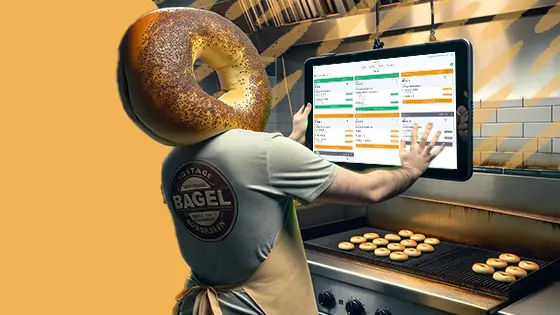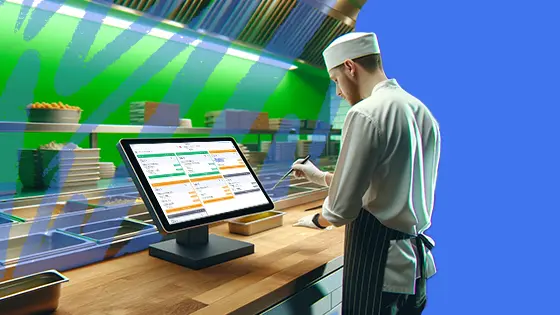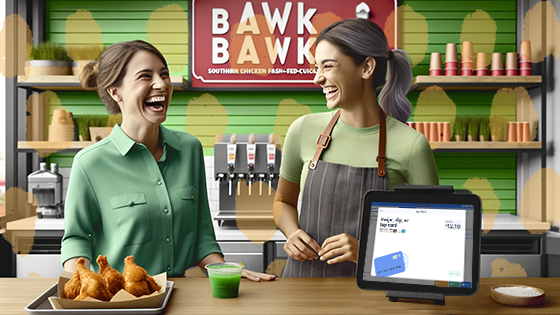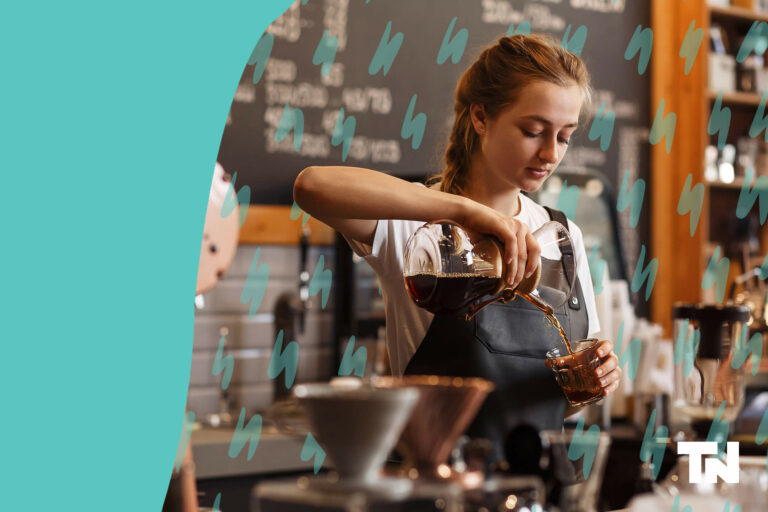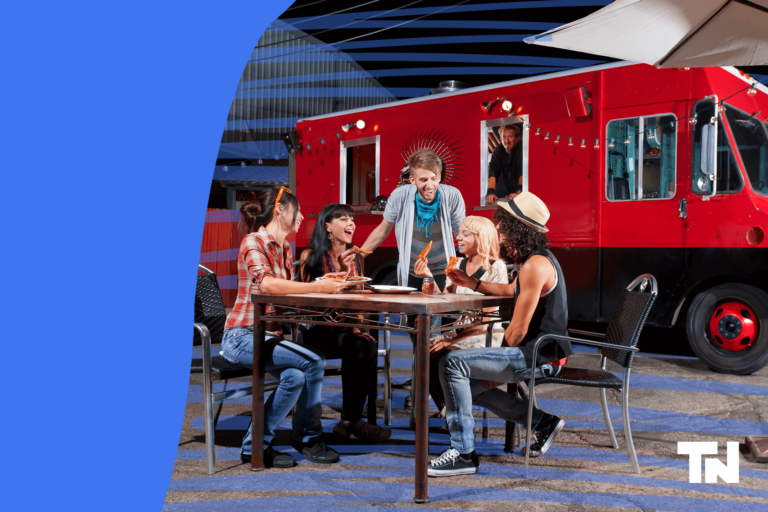This is the fifth in a 5-part series:
- What Is a Kitchen Display System?
- Who Uses a Kitchen Display System?
- When Should You Get a Kitchen Display System?
- Where Should You Put Your Kitchen Display System?
- How Does a Kitchen Display System Work?
For quick service restaurant owners, coffee shop owners, and staff who need to improve order accuracy, streamline operations, and increase profitability, you’ve likely heard that a kitchen display system is the answer you’re looking for. But how does a kitchen display system work – and will it work for your operation?
What is a Kitchen Display System?
At its core, a Kitchen Display System (KDS) is a smart screen hanging in your restaurant’s kitchen or coffee shop’s bar area that displays each order’s details, such as individual items and modifications, overall status, and more. Think of it like a dedicated employee whose sole purpose is to oversee that all orders get out fast and accurately.
However, it’s way more than just an order tracking system. A KDS makes sure that your front of house, back of house, and back office are in sync, which increases staff satisfaction, streamlines organizational efficiency, and improves data collection for reporting.
How does a kitchen display system work?
A kitchen display system might sound great but how does it actually work? Here’s a quick step-by-step followed by two real life examples.
How a Kitchen Display System works:
- A customer places an order either in person at your register or at the drive-thru window or online.
- Order is processed and collected by your point of sale system
- The order is turned into a ticket displayed on the kitchen display system
- Kitchen staff see the ticket at their stations and get to work!
- Staff mark items “complete” in real time.
- Once the entire ticket is complete, a text notification is automatically sent to your customer.
Example of how a kitchen display system works for a quick service restaurant.
Say an order is placed online for a fried chicken sandwich, fries, salad, and large cookie. As soon as the transaction is complete (i.e. paid for), the order is accepted and turned into a ticket broken down by items.
From there, itemized tickets are routed to your fryer and your salad station.
Next, team members see the tickets pop up on the screen in front of their stations and get to work. Fries and chicken go into the fryer. Salads are built. Your expo grabs a cookie.
As each team member completes their task, they check Complete on the touchscreen kitchen display system. In just a few minutes, the order is completed and ready for pick up.
For the finale, a text message is automatically sent to the customer, letting them know that their order is ready for pick up!
Example of how a kitchen display system works for a coffee shop
An order for a mocha latte, green tea, and cold brew with extra foam is placed at your counter register. Once the transaction is complete, the order is accepted and turned into a ticket broken down by items.
From there, baristas will see on their screens an itemized list of the order, including any and all modifications. They get to work steaming, steeping, and shaking and check off Complete on the touchscreen kitchen display system as they finish each item.
When the entire order is complete, the customer gets a text on their phone letting them know their order is ready!
Ready to run a more efficient, more profitable quick service restaurant, coffee shop, or food truck?
Table Needs Kitchen Display System is designed for quick service restaurants, coffee shops, and food trucks with one goal in mind: helping you provide speedy accurate service that improves your profits.
Learn more about Table Needs Kitchen Display System today. Hit the link below to schedule a hassle-free demo.
Follow us for tips, news, and tutorials to run a successful small restaurant.
